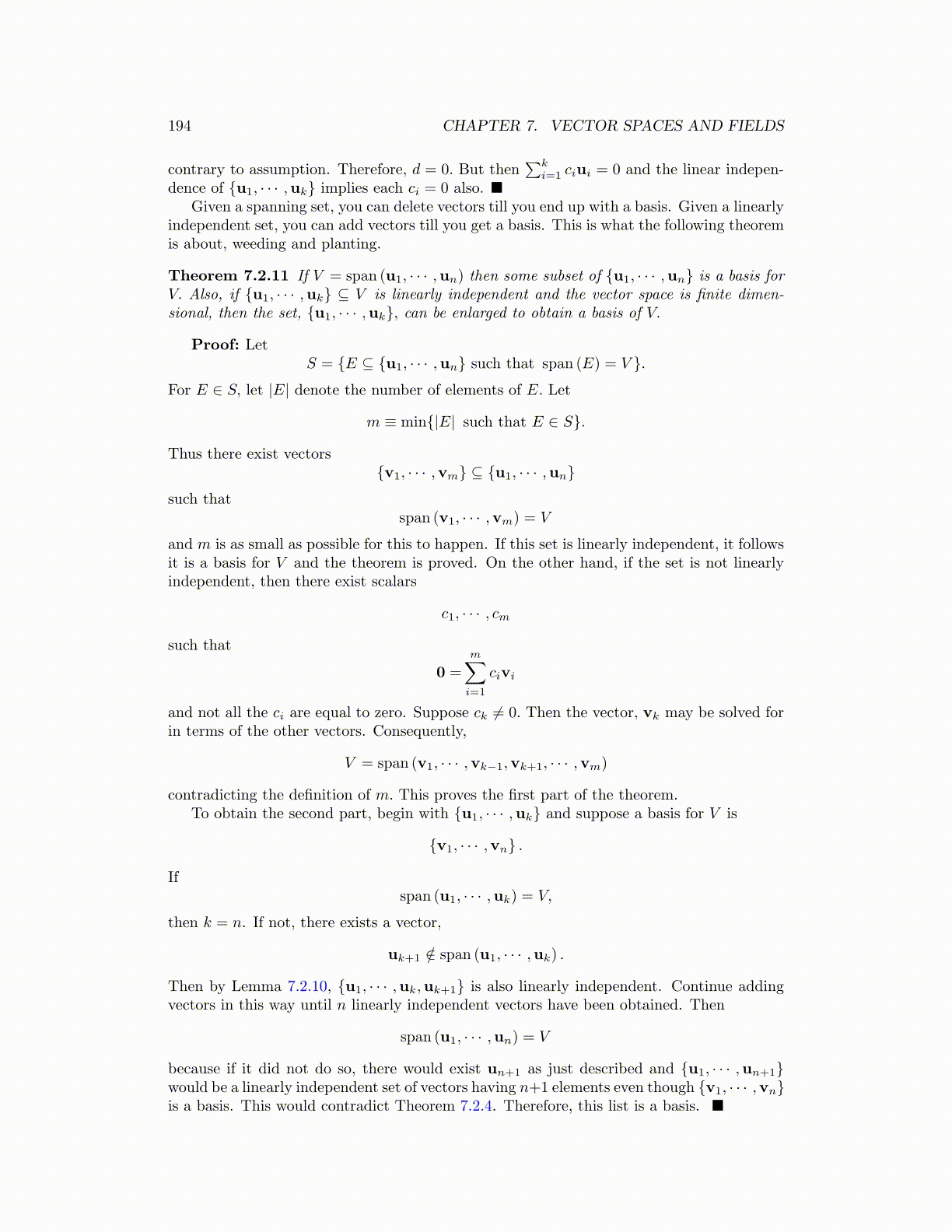
194 CHAPTER 7. VECTOR SPACES AND FIELDS
contrary to assumption. Therefore, d = 0. But then∑k
i=1 ciui = 0 and the linear indepen-dence of {u1, · · · ,uk} implies each ci = 0 also. ■
Given a spanning set, you can delete vectors till you end up with a basis. Given a linearlyindependent set, you can add vectors till you get a basis. This is what the following theoremis about, weeding and planting.
Theorem 7.2.11 If V = span (u1, · · · ,un) then some subset of {u1, · · · ,un} is a basis forV. Also, if {u1, · · · ,uk} ⊆ V is linearly independent and the vector space is finite dimen-sional, then the set, {u1, · · · ,uk}, can be enlarged to obtain a basis of V.
Proof: LetS = {E ⊆ {u1, · · · ,un} such that span (E) = V }.
For E ∈ S, let |E| denote the number of elements of E. Let
m ≡ min{|E| such that E ∈ S}.
Thus there exist vectors{v1, · · · ,vm} ⊆ {u1, · · · ,un}
such thatspan (v1, · · · ,vm) = V
and m is as small as possible for this to happen. If this set is linearly independent, it followsit is a basis for V and the theorem is proved. On the other hand, if the set is not linearlyindependent, then there exist scalars
c1, · · · , cm
such that
0 =
m∑i=1
civi
and not all the ci are equal to zero. Suppose ck ̸= 0. Then the vector, vk may be solved forin terms of the other vectors. Consequently,
V = span (v1, · · · ,vk−1,vk+1, · · · ,vm)
contradicting the definition of m. This proves the first part of the theorem.To obtain the second part, begin with {u1, · · · ,uk} and suppose a basis for V is
{v1, · · · ,vn} .
Ifspan (u1, · · · ,uk) = V,
then k = n. If not, there exists a vector,
uk+1 /∈ span (u1, · · · ,uk) .
Then by Lemma 7.2.10, {u1, · · · ,uk,uk+1} is also linearly independent. Continue addingvectors in this way until n linearly independent vectors have been obtained. Then
span (u1, · · · ,un) = V
because if it did not do so, there would exist un+1 as just described and {u1, · · · ,un+1}would be a linearly independent set of vectors having n+1 elements even though {v1, · · · ,vn}is a basis. This would contradict Theorem 7.2.4. Therefore, this list is a basis. ■